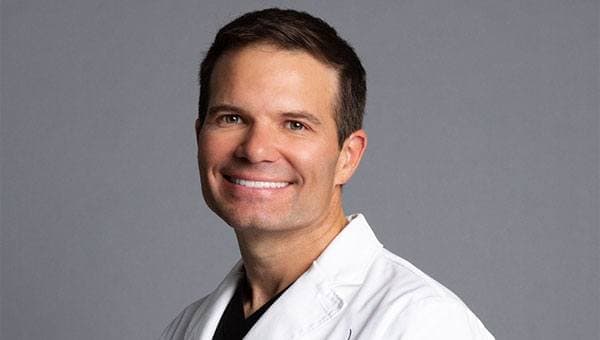Rhinophyma Dermabrasion
What Is Rhinophyma?
People suffering from rhinophyma in Scottsdale and Phoenix, Arizona may not realize that there are effective treatment options. Treating rhinophyma requires an understanding of rosacea. Rosacea is a chronic condition that causes red skin across the forehead, nose and cheeks as well as more prominent blood vessels on the face. In advanced stages, rosacea causes thickened skin of the nose, which can cause the development of rhinophyma.
Rhinophyma is an enlarged, red and bulbous nose that results from enlarged oil-producing (sebaceous) glands beneath the skin. Rhinophyma is more common in men (90% of patients are men), although it can affect both men and women and range in severity. The skin becomes much thicker than normal, usually around the nasal tip and nostril base, as these areas of the nose are already more densely populated with oil-producing glands than skin over the upper bridge of the nose.
Many patients with rhinophyma feel very embarrassed by their condition, and rhinophyma has the potential to become serious if it obstructs the nasal passages and interferes with normal breathing. If rhinophyma becomes too serious, the thicker nasal skin can burden the cartilage framework of the nose and collapse nostril openings. Some patients with very severe rhinophyma can even have reduced vision, if the skin becomes too overgrown.
Quick Links
What Is Rhinophyma Dermabrasion?
In Scottsdale, rhinophyma dermabrasion is a rosacea treatment option that has a high patient satisfaction rate. Skillful use of dermabrasion, using a rapidly rotating wire brush or scalpel, allows the excess skin to be removed and the nose reshaped for a more normal appearance.
Dermabrasion gradually “sands down” the rhinophymatous skin of the nose. The procedure is done in the office under local anesthesia. The typical cost for rhinophyma dermabrasion ranges from $8,000 to $10,000.
Rhinophyma Dermabrasion Recovery
The rhinophyma dermabrasion procedure results in a raw wound that will require daily care for 4 to 8 weeks while the skin heals. Dr. Hobgood recommends applying Vaseline to the area and washing your face several times a day. You will need to come back for a check-up to monitor your progress.
Rhinophyma can reappear after surgical removal, although treating the rosacea itself can reduce the chance that this will happen. The skin will remain red for up to one year, but the nose will otherwise appear smaller and less conspicuous with a significant reduction in rhinophyma.
Dr. Todd Hobgood
Dr. Hobgood combines his down-to-earth, personable demeanor with an artistic eye and technical expertise honed through thousands of surgeries, including more than 1,000 facelifts. He's recognized nationally for his leadership and has been honored by the American Academy of Facial Plastic and Reconstructive Surgery for his ongoing commitment to quality.
Meet Dr. HobgoodAm I a Good Candidate for Rhinophyma Treatment?
If you have an enlarged or swollen nose that makes you uncomfortable, self-conscious, or that impedes breathing or vision, you may be a good candidate for rhinophyma treatment.
Is Rhinophyma Covered by Insurance Companies?
In the last five years, we have been unsuccessful in obtaining any medical coverage in even very severe cases. This is largely considered a cosmetic condition, although it clearly affects functionality.




